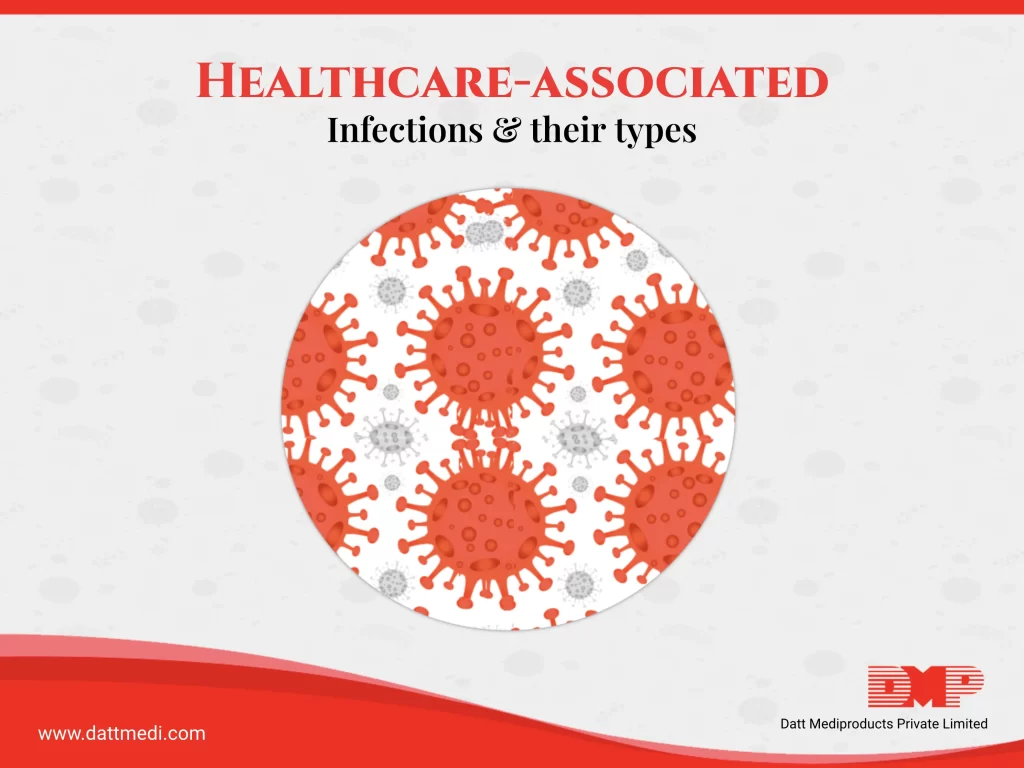
Healthcare-acquired infections (HAIs) are infections that patients get while receiving treatment for a separate condition in a healthcare facility. They are also known as “nosocomial infections”. It has been observed that over 1.4 million patients suffer from healthcare associated infections (HAIs) globally at any time.
HAIs can be associated with procedures (surgery) and the devices used in medical procedures (catheters or ventilators).
As per the study titled “Multistate Point-Prevalence Survey of Health Care–Associated Infections”, published in the New England Journal of Medicine, among the pathogens causing HAIs, Clostridium difficile (12.1%) is the leading pathogen followed by Staphylococcus aureus (10.7%), Klebsiella pneumoniae (9.9%), and Escherichia coli (9.3%).
Most HAIs are preventable and can be avoided with diligent infection prevention efforts.
HAIs can happen in all types of healthcare settings including hospitals, ambulatory surgical centers, Dialysis facilities, healthcare clinics, and long-term care facilities.
Who’s At Risk?
Transmission of pathogen in healthcare facility can occur through direct contact with the healthcare worker or the contaminated surrounding. Young children, elderly and people with compromised immune systems are at greater risk of getting infected.
Other common risk factors include:
- Long stay in hospitals
- Use of indwelling urinary catheters
- Unhygienic conditions by healthcare workers, visitors or patients
- Overuse of antibiotics
Common types of HAIs based on the procedures or devices used in healthcare facilities are:
– Central line-associated bloodstream infection (CLABSI): A central venous catheter (central line), is placed into a major vein near the heart to give medicines and take blood. This type of infection occurs when germs enter the bloodstream through the central line.
– Surgical site infection (SSI): It occurs in the part of the body where surgery took place. SSIs may be superficial infections involving the skin only, or more serious infections involving deeper tissues around the surgery location such as skin, organs, or implanted material. Symptoms for SSI include fever, redness and pain at the site of surgery, and drainage of cloudy fluid from the site of incision. The causative agents usually include Staphylococcus aureus and sometimes Methicillin-resistant staphylococcus aureus (MRSA).
– Catheter-associated urinary tract infection (CAUTI): These are the most common types of HAIs. A catheter is a tube which is inserted into the bladder through the urethra to drain urine from the body into the collection bag. It has been documented by CDC that 75% of UTIs are associated with urinary catheters. The catheters should be removed as soon as they are no longer needed in order to prevent CAUTI. Causative organisms can be Pseudomonasspecies and Proteus species.
– Ventilator-associated pneumonia (VAP): A ventilator is a machine that helps patients breathe. A tube is placed in a patient’s mouth or nose, or through a hole in the neck in order to provide oxygen to the lungs. Lung infection or Ventilator-associated Pneumonia occurs if the germ enters the patient’s lungs through this tube.
Ways to prevent HAIs
We can help patients stay healthy and safe from HAIs by practicing some of these steps:-
- Healthcare providers and visitors must clean their hands with soap and water or an alcohol-based hand rub. It is important to keep hands clean before and after caring for a patient to avoid the spread of infection.
- It is advisable to use catheter only when it is required and removed as soon as possible to prevent UTIs.
- Healthcare workers must wear masks, hand gloves, gown and appropriately cover hair.
- It is always important to recognize the signs and symptoms like redness, pain or drainage at the site of incision, followed by fever. Always seek guidance from the healthcare provider to eliminate HAIs.
- Antibiotics must be used carefully and must be taken only when required.
- Annual flu vaccine shots are recommended to avoid complications later.
It has been observed that Healthcare-associated infections are often avoidable and can be prevented by keeping oneself abreast with the latest findings regarding spread of infection. Patient, family members, visitors and health care workers all play important role in keeping the patient safe.
You may follow us @dattmediproducts or visit www.dattmedi.com for more health-related information.





